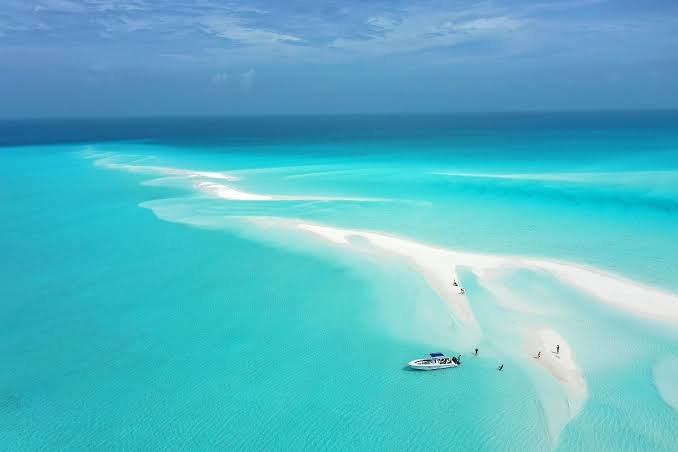
If you’ve ever dreamed of a secluded, sun-soaked spot surrounded by turquoise waters, then the idea of a vibrant sandbar might just be your ultimate paradise. Sandbars, often hidden gems in tropical destinations, offer a unique experience of being in the middle of the ocean, surrounded by breathtaking scenery, with only a strip of sand underfoot. This blog post will explore what makes a vibrant sandbar so special, where you can find them, and why they should be on your travel bucket list.
What Is a Vibrant Sandbar?
A sandbar is a natural formation, typically made up of sand, silt, or small pebbles, that appears above the surface of the water. Sandbars are formed by the movement of water currents that deposit these materials in a specific location over time. What makes a sandbar “vibrant” is not just its existence, but the surrounding environment. The term “vibrant sandbar” often refers to sandbars located in areas with crystal-clear waters, abundant marine life, and a dynamic, colorful atmosphere.
These sandbars are more than just a stretch of sand; they are lively, picturesque spots where you can experience the raw beauty of nature. The vibrancy comes from the contrast between the bright white or golden sand and the deep blues and greens of the surrounding ocean. It’s the perfect place for a day of relaxation, snorkeling, or simply soaking in the sun.
Why Visit a Vibrant Sandbar?
1. A Unique Experience
There’s something magical about standing on a tiny strip of sand in the middle of the ocean. A vibrant sandbar offers an experience unlike any other—it’s almost like being on your private island, surrounded by nothing but the sea and sky. Whether you’re traveling solo, with a partner, or in a group, a visit to a sandbar promises a sense of adventure and tranquility.
2. Perfect for Snorkeling and Swimming
Vibrant sandbars are often located in areas with calm, shallow waters, making them ideal spots for snorkeling and swimming. The clear waters provide excellent visibility, allowing you to see vibrant coral reefs, schools of fish, and other marine life. It’s a haven for nature lovers and underwater explorers alike.
3. Incredible Photo Opportunities
If you’re a photography enthusiast or just love taking pictures for your Instagram feed, a vibrant sandbar is a dream come true. The contrast of the bright sand against the colorful waters creates stunning visuals. Whether it’s sunrise, sunset, or the middle of the day, the natural beauty of a sandbar provides the perfect backdrop for breathtaking photos.
4. A Peaceful Escape
Away from the hustle and bustle of city life, a vibrant sandbar offers a peaceful escape where you can truly unwind. The only sounds you’ll hear are the gentle lapping of waves and the occasional call of seabirds. It’s an ideal spot for meditation, yoga, or just sitting back and enjoying the moment.
Where Can You Find Vibrant Sandbars?
Vibrant sandbars can be found in many tropical destinations around the world. Here are a few must-visit locations:
- The Maldives: Known for its stunning atolls and crystal-clear waters, the Maldives boasts several vibrant sandbars that are perfect for day trips.
- Bahamas: With over 700 islands and cays, the Bahamas is home to numerous sandbars, including the famous Big Major Cay, where you can swim with pigs.
- Philippines: The Philippines, particularly the Palawan and Cebu regions, are known for their pristine sandbars surrounded by turquoise waters.
- Australia: The Whitsunday Islands in Australia offer several sandbars, including Whitehaven Beach, which is often ranked as one of the most beautiful beaches in the world.
- Hawaii: Off the coast of Maui, you’ll find the Molokini Crater sandbar, a popular spot for snorkeling and diving.
Tips for Visiting a Vibrant Sandbar
When planning a visit to a vibrant sandbar, here are a few tips to ensure you have the best experience:
- Check the Tides: Sandbars are often submerged during high tide, so it’s essential to plan your visit during low tide to ensure the sandbar is visible and accessible.
- Pack Light: Bring only essentials like sunscreen, water, and a camera. Since you’re in the middle of the ocean, there won’t be any facilities.
- Respect the Environment: Sandbars are delicate ecosystems, so make sure to leave no trace. Avoid disturbing the marine life and take all your trash with you.
- Wear Water Shoes: The sand can sometimes be coarse, and there may be sharp shells or coral fragments, so water shoes can protect your feet.
Conclusion
A vibrant sandbar is a perfect blend of adventure, beauty, and tranquility. Whether you’re seeking a unique travel experience, an underwater adventure, or simply a peaceful place to relax, a vibrant sandbar offers it all. Next time you plan a tropical getaway, make sure to add a visit to a vibrant sandbar to your itinerary—you won’t regret it!
FAQs About Vibrant Sandbars
1. What is the best time to visit a sandbar?
The best time to visit a sandbar is during low tide when the sand is exposed, allowing you to walk on it. Early morning or late afternoon also provides the best lighting for photography.
2. Can you camp on a sandbar?
Camping on a sandbar is generally not recommended due to the risk of tides rising and submerging the area. It’s best to visit during the day and return to a more permanent location at night.
3. How do I get to a sandbar?
Most sandbars require a boat ride to reach, as they are located offshore. Some tours specialize in taking visitors to these remote spots.
4. Are sandbars safe?
Sandbars are generally safe, but it’s important to be aware of changing tides and currents. Always listen to local advice and be cautious when swimming or exploring.
5. What should I bring to a sandbar?
Bring essentials like sunscreen, water, snacks, a camera, and snorkeling gear. Water shoes are also recommended.
6. Are vibrant sandbars only found in tropical locations?
While most vibrant sandbars are in tropical regions, they can be found anywhere with the right conditions—clear waters, sandy deposits, and dynamic marine life.







